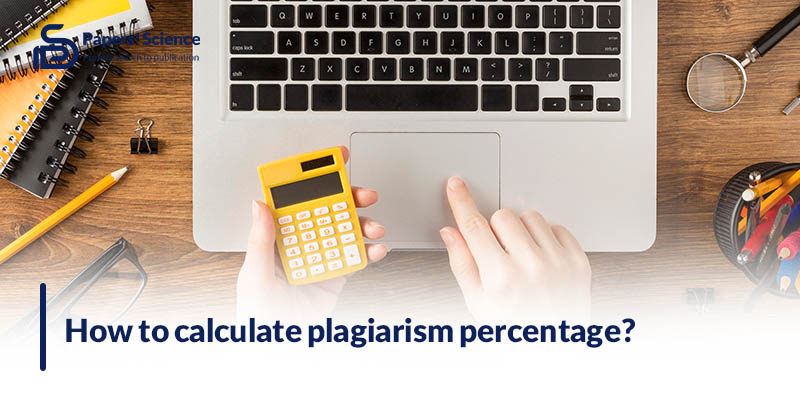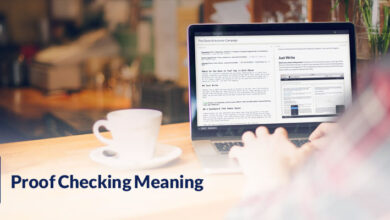How to Calculate Plagiarism Percentage?

A significant question arises if you are a researcher striving to uphold the highest academic integrity: How do you calculate plagiarism percentage?
Assessing plagiarism levels in your research papers is crucial in maintaining academic ethical standards.
Calculating this percentage accurately is essential, as it ensures the originality of your scholarly contributions while guarding against unintentional infractions.
This article aims to demystify the quantifying plagiarism process, offering researchers insights and practical guidance.
So, do not miss this essential guide, whether you are a seasoned academic or just beginning your scholarly voyage.
What is the importance of calculating plagiarism in academic papers?
The importance of calculating plagiarism in academic papers cannot be overstated. It lies at the heart of preserving the integrity and credibility of scholarly work:
1. First, it upholds the core values of academic honesty, ensuring that the presented ideas are original and correctly attributed. Moreover, pinpointing instances of plagiarism serves as a vital educational tool. For students, it fosters a deeper understanding of proper citation practices and encourages ethical research.
2. On the other hand, instructors can identify teachable moments to impart valuable lessons about intellectual property and the consequences of academic misconduct. In the wider academic community, assessing plagiarism bolsters the reputation of institutions. It demonstrates a commitment to maintaining high standards of ethics and enhancing trust in the educational system.
3. Furthermore, it safeguards the authenticity of scientific knowledge, promoting genuine advancements and innovations.
How to calculate the percentage of plagiarism in scientific papers?

As mentioned in the previous section, it is necessary to calculate the plagiarism percentage in all papers.
In the following, we will provide you with some methods that can help you do so easily:
1. Utilize online plagiarism detection tools
Select a reliable online plagiarism detection tool, such as Turnitin, Grammarly, or Copyscape. These tools are designed to identify and highlight instances of potential plagiarism in your scientific paper.
2. Upload your paper
Sign in to the chosen plagiarism detection website or app and navigate to the upload section. Follow the prompts to upload your scientific paper in a compatible format, typically PDF or Word.
3. Initiate the scan
Start the plagiarism scan by clicking the designated button. The tool will analyze and compare your paper to a vast academic and online content database.
4. Review the results
Once the scan is complete, the tool will generate a report highlighting any sections of your paper that match existing sources. Carefully review these flagged areas to determine the extent of similarity.
5. Examine the percentage of plagiarism.
Most plagiarism detection tools provide a percentage indicating the amount of text in your paper that matches external sources. This percentage reflects the potential plagiarism within your document.
6. Identify & rectify issues.
Pay close attention to the highlighted passages and make necessary revisions to attribute sources or rewrite content properly. Ensure that your paper adheres to proper citation and referencing guidelines.
7. Rescan (if necessary)
After revisions, rescan your paper to verify that plagiarism issues have been adequately addressed. Repeat the process until your paper meets acceptable plagiarism standards.
Read More: Research and publication ethics question paper
Tips & tricks to write a lower percentage plagiarism for academic papers

Writing academic papers with minimal plagiarism is essential to maintain scholarly integrity.
Here are some valuable tips and tricks to assist you in achieving lower percentages of plagiarism:
· Effective note taking
Begin your research with thorough note-taking. Record source details and your thoughts separately to prevent accidental copying.
· Understand proper citation
Familiarize yourself with your institution’s citation style guide (e.g., APA, MLA). Accurate citations ensure proper attribution of borrowed ideas.
· Paraphrase skillfully
When using others’ ideas, practice the art of paraphrasing. Express the concept in your own words while retaining the original meaning.
· Use quotations sparingly
Direct quotations should be sparingly employed and enclosed in quotation marks. Ensure that you cite the source accurately.
· Regularly check for plagiarism.
Utilize plagiarism detection tools during the writing process, not just as a final check.
· Peer review
Seek feedback from peers or mentors to ensure your work is original and properly cited.
· Proofreading
Carefully proofread your paper to catch any accidental plagiarism, such as incorrect citations or missed quotation marks.
· Stay informed
Stay updated on the latest developments in plagiarism detection and citation guidelines to maintain best practices.
Let’s review
Learning how to calculate plagiarism percentage is a matter of ethical responsibility and a testament to your commitment to scholarly excellence.
You can drastically lower the percentage of plagiarized material in your writing by using good note-taking, citation, and writing strategies.

What strategies have you found most useful in your academic writing process, and how have they affected your work? Share your experiences in the comments!



